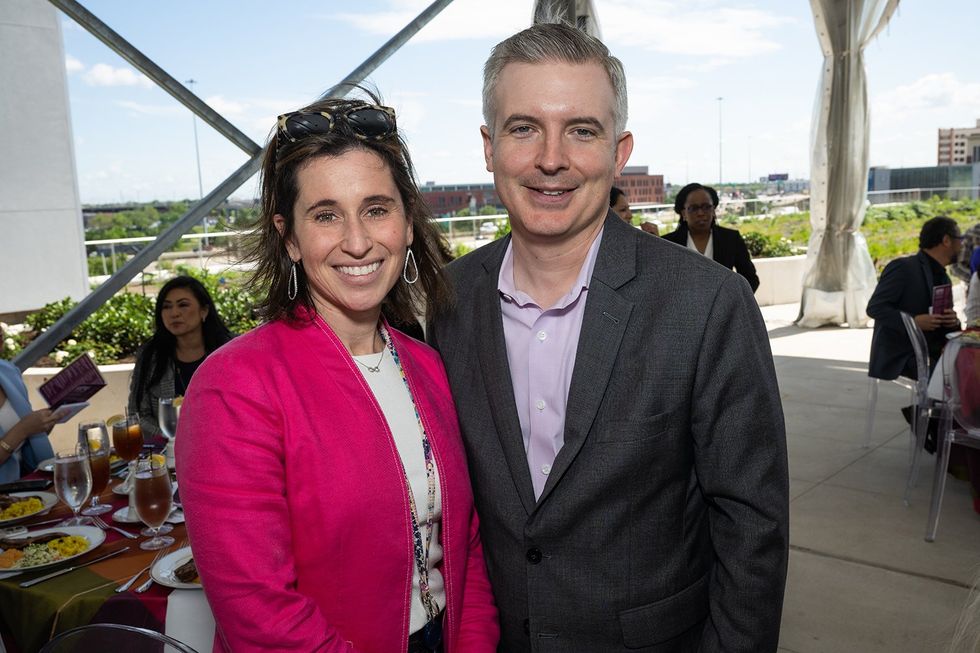With Real Emmy Statues as Centerpieces, a Lively Luncheon Raises $250,000 for HSPVA

Kerry & Charles Walker and Alex Lazar
THE SUN WAS shining as more than 300 supporters gathered on the rooftop gardens of POST for Kinder High School for the Performing and Visual Arts.
As they entered, guests enjoyed the sounds of not one but two student-led string quartets as they perused a sculpture garden of ceramic pieces, also created by HSPVA artists. The luncheon honored Kinder HSPVA alumna and eight-time Emmy winner Rachelle Mendez — whose Emmy statues were used as centerpieces on the head tables! Mendez has produced Netflix’s Queer Eye and Sparking Joy with Marie Kondo along with other notable shows.
As lunch by Cafe Natalie was served, the lively program began, with fun moments like a Legally Blonde-themed pop music tribute, and moving ones including a speech from Texas Poet Laureate Lupe Mendez. There was also a performance by Kinder HSPVA’s award-winning Mariachi Los Pasajeros.
The luncheon raised $250,000 to be used for the school’s arts supplies, adjunct faculty, and specialized equipment and technology.

Duke & CC Ensell, Brandon Weinbrenner & Mitchell Greco

Kinder HSPVA's Mariachi Los Pasajeros

Bob Boblitt & Serena Paquette

Tucker Irey

Kim Falconer and Megan Lembcke

Algenita Scott Davis and Wendy Montoya Cloonan

Grayson & Chiarra Stratton, Marcus & Melanie Manning

Rachelle Mendez and Alene Coggin

Emily Schreiber and Austin Thomas

Stephanie Beveridge and Chris Powers








